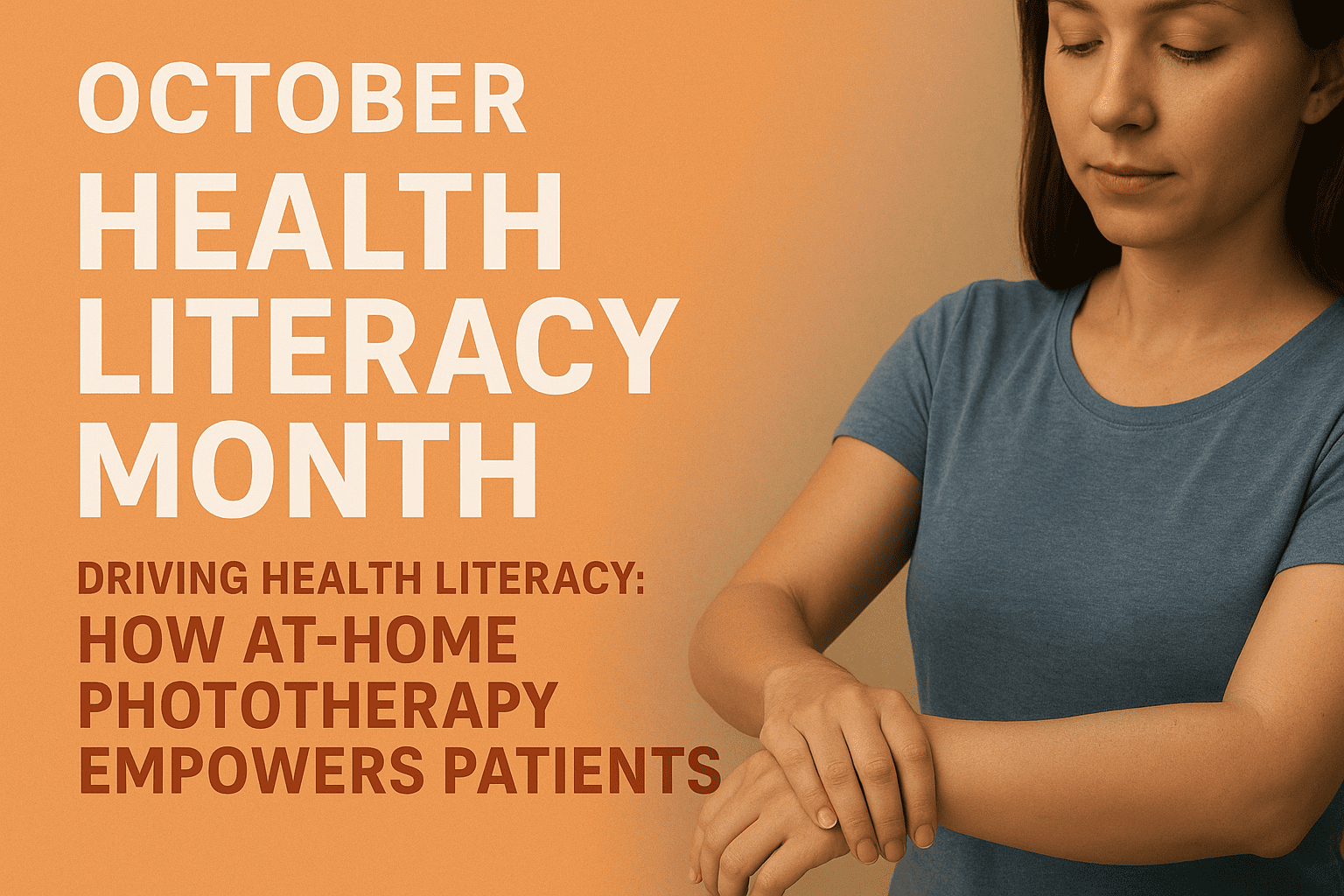
As we enter October, a month globally designated to raise awareness about health literacy, the team at Diosole Medical is proud to reaffirm our commitment to empowering patients and clinicians alike through innovative diagnostics and treatment solutions. According to the Office of Disease Prevention and Health Promotion, October’s observances include Health Literacy Month and other vital initiatives.
Health literacy is more than simply reading a pamphlet or following instructions—it encompasses the capacity of patients to obtain, process, and understand basic health information and services needed to make appropriate health decisions. For a company like Diosole Medical, whose product line spans narrow-band UVB phototherapy lamps for vitiligo and psoriasis, multi-colour LED light therapy tools, and advanced dermoscope devices for skin analysis (see our “Products” page), the connection is clear: technology only delivers value when the end-user understandshowto use it,whyit matters, andwhatoutcomes to expect.
When a patient uses an at-home device, it becomes even more essential that instructions are clear, risks and benefits are communicated, usage protocols are simple, and follow-up care is structured. Without this foundation of literacy, even the most advanced device may be under-utilised or misused.
Our UVB phototherapy solutions (for example the handheld NB-UVB lamp, portable 308 nm LED pen and desktop units) push the envelope of what is possible outside the clinic. But to realise the full potential of home use, we invest in user-friendly interfaces, feedback mechanisms, and training materials that speak plainly about skin type, dose scheduling, exposure safety and expected results.
By pairing device innovation with health literacy-centric materials—such as animated videos, infographics, and quick-reference guides—we ensure that patients and caregivers feel confident, rather than overwhelmed. This integration is not incidental; it’s strategic. When users grasp the “why” behind a treatment plan, compliance improves, outcomes strengthen and the brand-trust cycle grows.
In parallel, our LED light therapy devices (three-colour red/yellow/blue, or four-colour PDT LED systems) are accompanied by clear user guidance, skin‐type profiles and safety checklists. Our dermoscope and pet Woods lamp accessories emphasize early detection and monitoring, but even these rely on a literate user base. For example, when a user identifies a suspicious lesion on the dermoscope preview, knowing to act—schedule a dermatology consultation—is part of health literacy in action.
We will publish a special “Health Literacy Kit” in our Media & Events section, featuring patient-education materials tailored to our home-use phototherapy range.
We will host a live webinar (date: 22 October) titledEmpowering Patients: Safely Using At-Home Phototherapy, inviting dermatologists, clinical users and patient-advocates.
Social-media posts will feature the hashtag#OctoberHealthLiteracyand will include short educational clips about “What is UVB phototherapy?”, “How to choose the right LED device”, and “What your skin diagnostic tool is really telling you”.
Whether you are a clinician recommending our devices, a distributor training end-users, or a patient exploring at-home treatments: ask questions, insist on clear user guides, and participate in the education process. Health literacy is a shared responsibility. At Diosole Medical, we’re proud to drive both innovation and understanding.